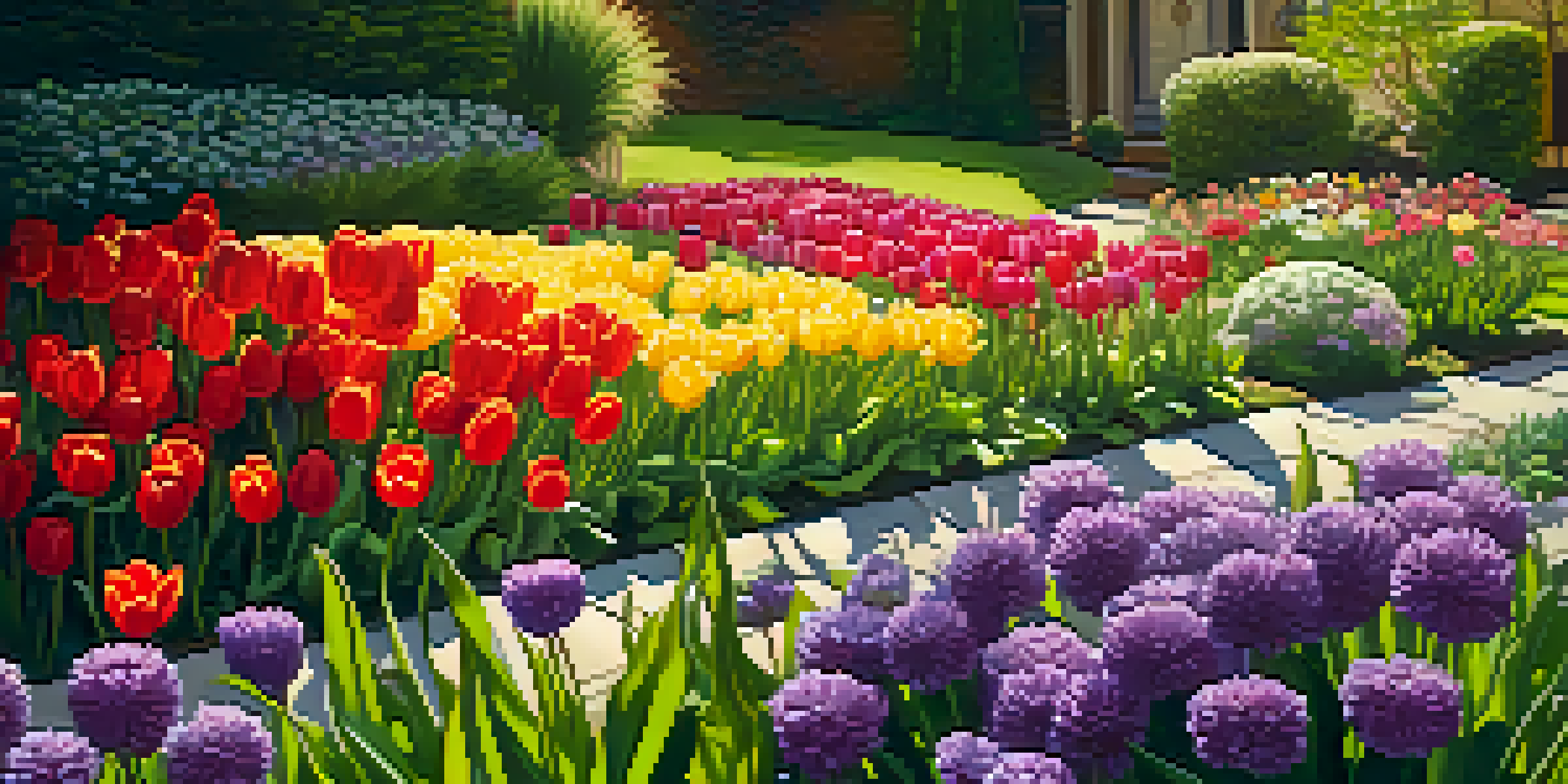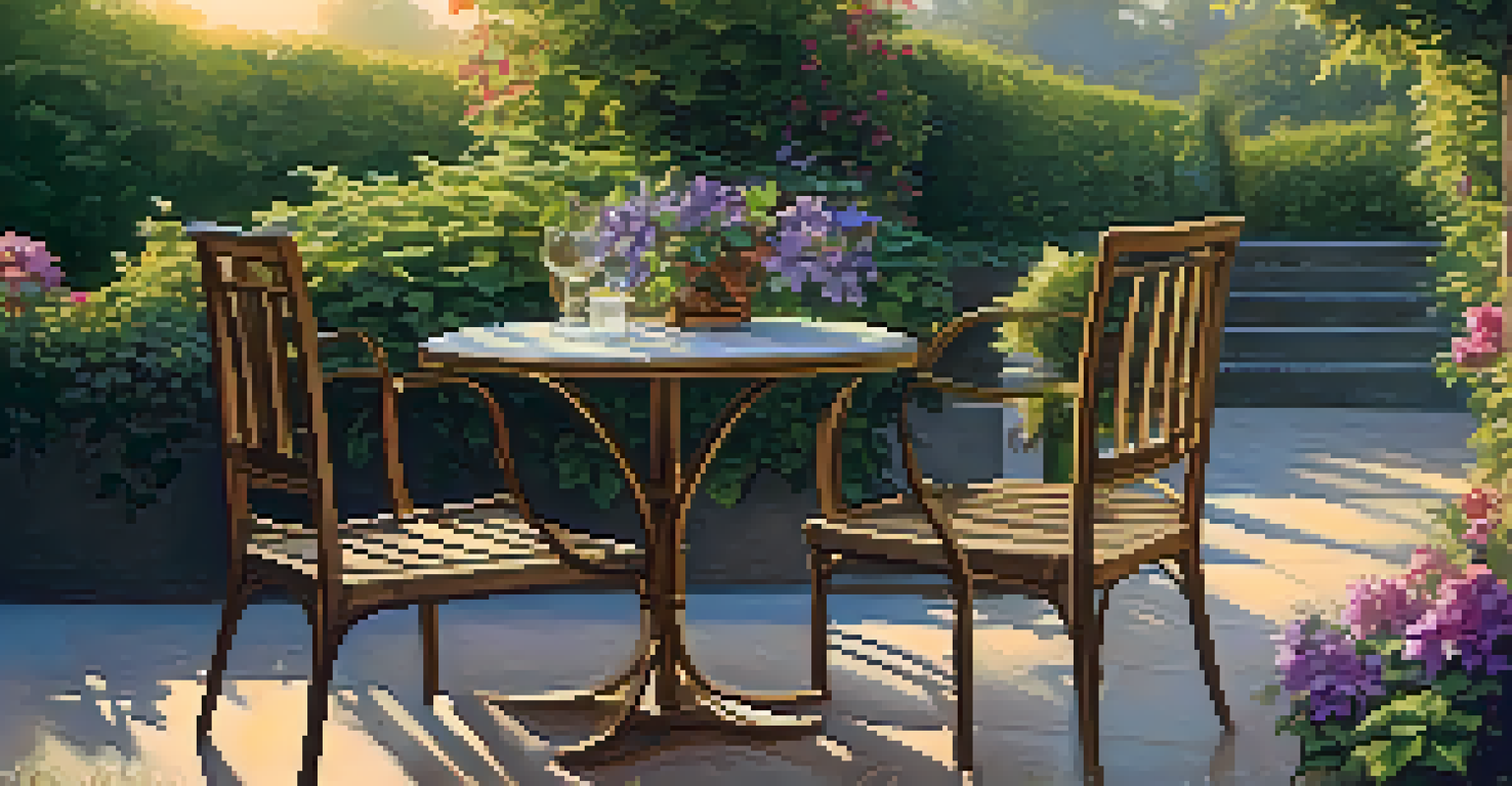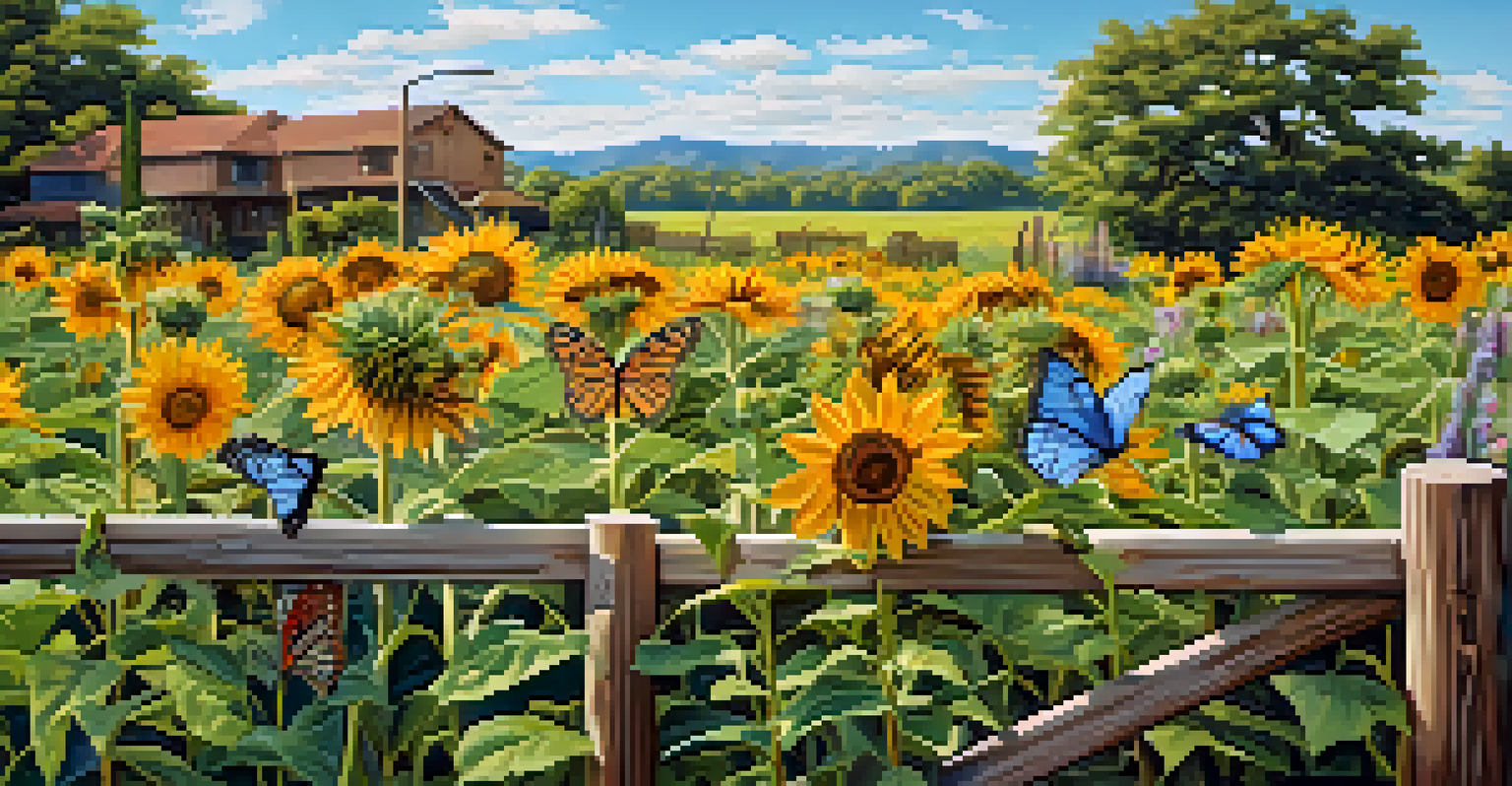Choosing the Right Plants for Outdoor Living Spaces

Understanding Your Outdoor Space and Climate
Before you dive into plant selection, take a moment to assess your outdoor space. Consider factors like sunlight exposure, soil type, and moisture levels. Each of these elements plays a crucial role in determining which plants will thrive in your garden.
Gardening is a way of showing that you believe in tomorrow.
Climate is another key aspect to consider. Different plants have varying temperature tolerances and water needs. For instance, succulents flourish in dry, warm climates, while ferns prefer cool, moist environments.
By understanding these factors, you’ll be better equipped to choose plants that not only survive but also enhance the beauty of your outdoor living area.
Choosing Plants Based on Usage and Function
Think about how you plan to use your outdoor space. Are you looking to create a cozy nook for relaxation, or do you want a vibrant area for entertaining? Different plants can help you achieve these distinct atmospheres.

For instance, low-maintenance plants like ornamental grasses work well in areas where you want a natural look without much upkeep. Conversely, colorful flowering plants can add vibrancy and create a lively ambiance for social gatherings.
Assess Your Space and Climate
Understanding sunlight, soil type, and moisture levels in your outdoor area is crucial for selecting the right plants.
By aligning your plant choices with the intended function of your outdoor space, you’ll create an area that’s not only beautiful but also practical.
Considering Maintenance and Care Requirements
When selecting plants, consider how much time you can dedicate to their upkeep. Some plants require regular watering, pruning, and fertilizing, while others thrive on neglect, making them ideal for busy individuals.
To plant a garden is to believe in tomorrow.
For example, if you prefer a low-maintenance garden, opt for drought-resistant plants like lavender or succulents. These plants are not only beautiful but also require minimal care, allowing you to enjoy your space without the stress of constant maintenance.
Understanding your commitment to plant care will help you choose the right species that fit into your lifestyle.
Incorporating Seasonal Interest with Diverse Plants
To keep your outdoor space visually appealing year-round, consider incorporating a variety of plants that bloom in different seasons. This approach ensures that there’s always something vibrant to look at, no matter the time of year.
For instance, you might choose spring-blooming tulips, summer-flowering daisies, and fall-hued chrysanthemums. This diversity creates a dynamic landscape that evolves with the seasons, keeping your outdoor area fresh and engaging.
Choose Plants for Purpose
Aligning plant choices with how you intend to use your space can create a practical and beautiful outdoor environment.
By planning for seasonal interest, you’ll ensure your outdoor space remains a source of joy throughout the year.
Utilizing Vertical Space with Climbing Plants
If you’re dealing with a smaller outdoor area, think vertically! Climbing plants, like clematis or morning glories, can add lush greenery without taking up valuable ground space. They can transform walls, fences, and trellises into vibrant living art.
In addition to their aesthetic appeal, climbing plants can provide privacy and shade. A well-placed vine can create a secluded nook, perfect for enjoying a cup of coffee in the morning.
Using vertical space creatively maximizes your outdoor area and can make even the smallest spaces feel expansive and inviting.
Creating a Cohesive Design with Color Schemes
Choosing a color palette for your plants can help create a cohesive and visually appealing outdoor space. Think about the colors that resonate with you and how they interact with each other.
For example, a monochromatic scheme using various shades of green can create a serene atmosphere, while a vibrant mix of reds, yellows, and purples can energize the space. Consider the overall mood you’d like to achieve.
Incorporate Seasonal Diversity
Selecting a variety of plants that bloom in different seasons ensures your garden remains vibrant and engaging year-round.
By thoughtfully selecting your colors, you can create a harmonious outdoor oasis that reflects your personal style.
Selecting Plants for Wildlife and Eco-friendliness
If you’re passionate about the environment, consider choosing plants that attract local wildlife. Native plants are excellent choices as they support local ecosystems and provide food and habitat for birds, bees, and butterflies.
For example, planting milkweed can help support the declining monarch butterfly population, while sunflowers attract various pollinators. Incorporating these plants not only benefits wildlife but also enhances the beauty of your outdoor space.

By selecting eco-friendly plants, you contribute to a healthier environment while enjoying a more vibrant garden.
Consulting Local Experts and Resources
Finally, don’t hesitate to consult local gardening experts or resources. Garden centers often have knowledgeable staff who can provide insights into the best plants for your specific area and conditions.
Online resources, like gardening forums and regional extension services, can also be invaluable. They offer tips, plant recommendations, and troubleshooting advice tailored to your location.
By leveraging local expertise, you’ll make informed decisions that lead to a thriving outdoor living space.